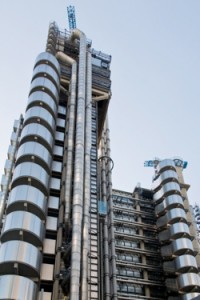Alternative capital and insurance-linked securities (ILS) are set to continue to disrupt the insurance and reinsurance market, according to Chairman of Lloyd’s of London John Nelson, reshaping the industry and continuing to pressure catastrophe lines of business.
 Speaking at an Insurance Institute of London lecture at Lloyd’s on April 28th, Nelson explained that innovation is key for the Lloyd’s market right now, as it seeks to remain relevant in the same way that other traditional players do and the market’s efforts to engage with alternative capital are a key example of this.
Speaking at an Insurance Institute of London lecture at Lloyd’s on April 28th, Nelson explained that innovation is key for the Lloyd’s market right now, as it seeks to remain relevant in the same way that other traditional players do and the market’s efforts to engage with alternative capital are a key example of this.
Lloyd’s is “playing an extremely active role in helping support the UK government in its plans to establish London as a centre for ILS” Nelson explained, adding that the development of the Lloyd’s Index, which was announced last year, is an example of this.
Lloyd’s continues to work hard on the development of the market Index, Nelson later explained, but he said that the delivery of the Lloyd’s Index is taking longer than expected. Given Lloyd’s had hoped to launch the Index in the middle of this year that admission does suggest that its delivery may slip.
So Lloyd’s will seemingly maintain its open approach to engaging with alternative reinsurance capital and ILS, with its ambitions in the space now forming a core part of its strategic innovation strategy. Nelson said that alternative capital, alongside other factors such as low-interest rates, is “changing the nature of the market,” which clearly means that Lloyd’s has to be flexible and change alongside it.
If the inflow of capital markets money continues to “flood” into the property catastrophe reinsurance market, which Nelson said we have to assume will happen, “this will continue to change the shape of the industry.”
Nelson cited Goldman Sachs and its well referenced by many report from 2013 that listed alternative capital in insurance and reinsurance as one of eight disruptive themes in business with the potential to reshape a sector and command an increasing level of attention from investors over years to come.
We’ve certainly seen alternative capital, the growth and expansion of ILS and the increasing sophistication of the ILS fund manager community reshape property catastrophe reinsurance and this reshaping is now expanding to other areas of the market and also disrupting primary property risk value-chains.
Speaking of the disruption Goldman Sachs forecast, Nelson said; “It started then – three years ago – and I think we can see that continuing today.”
Nelson went on to say that as a result there is the expectation that pressure on catastrophe reinsurance pricing will continue “for the foreseeable future” and that the market need to “face up to this fact and adapt to it.”
Of course, at this time that Lloyd’s has clearly come to terms with the threat and opportunity posed by ILS and alternative capital and faced up to it, there is another threat to the world’s oldest insurance and reinsurance market.
Insurance technology, or insurtech, is of course the other disruptive gorilla in the room that Lloyd’s and the traditional insurance or reinsurance market have to face in years to come.
Nelson acknowledged that “the insurance industry and Lloyd’s, have been slow to adopt new technology,” but said the market would continue to look to improve its operational efficiency with technology initiatives.
But with disruption from alternative capital set to continue, and in reality Lloyd’s was relatively slow to respond to this, the question is will it respond quickly enough to the disruptive threat of insurtech and the new business models that generates?
Lloyd’s has an incredibly strong and influential position in the marketplace, but no business or market is immune to disruptive threats and the reshaping of an industry. Alternative capital has without a doubt eroded some of the advantage Lloyd’s had, particularly in property catastrophe reinsurance but also increasingly in specialty risks and commercial property insurance. Insurtech will do the same.
As a result innovation, as Nelson referred to, is a positive response and could help Lloyd’s to better navigate the disruptive threats and market challenges. But innovation also begets change and Lloyd’s efforts to adapt and be flexible will have knock-on effects and alter its business model and outlook even further.
Another interesting possibility is how the market will be affected by two disruptive forces combining, as it seems destined that alternative capital, ILS structures and practices and insurance technology will combine, as natural partners in creating an efficient risk-to-capital value-chain.
So will innovation be enough (and fast enough) to save the market’s business model entirely, or is a more wide-ranging restructure of the market, its capital providers and its underwriting value-chain just a matter of time? Time will tell.
Also read:
– Efficient ILS structure will help secure London’s future: Beale, Lloyd’s.
– Lloyd’s continues to loosen up to alternative capital & ILS.
 View all of our Artemis Live video interviews and subscribe to our podcast.
View all of our Artemis Live video interviews and subscribe to our podcast.
All of our Artemis Live insurance-linked securities (ILS), catastrophe bonds and reinsurance video content and video interviews can be accessed online.
Our Artemis Live podcast can be subscribed to using the typical podcast services providers, including Apple, Google, Spotify and more.































